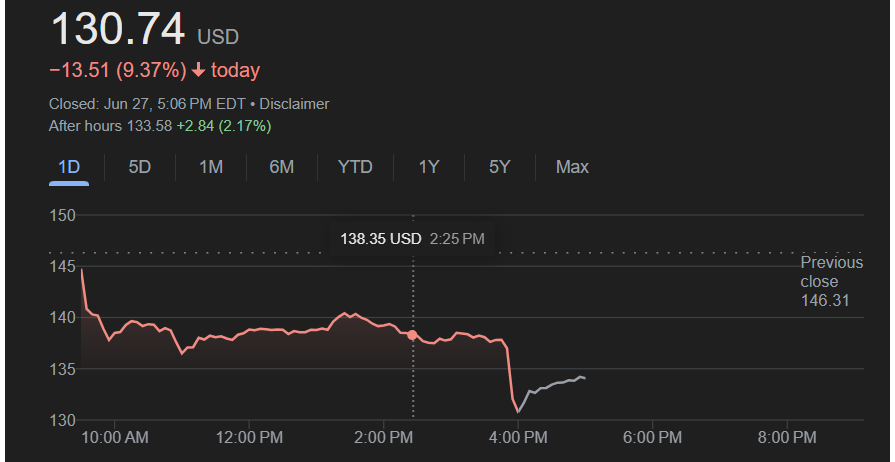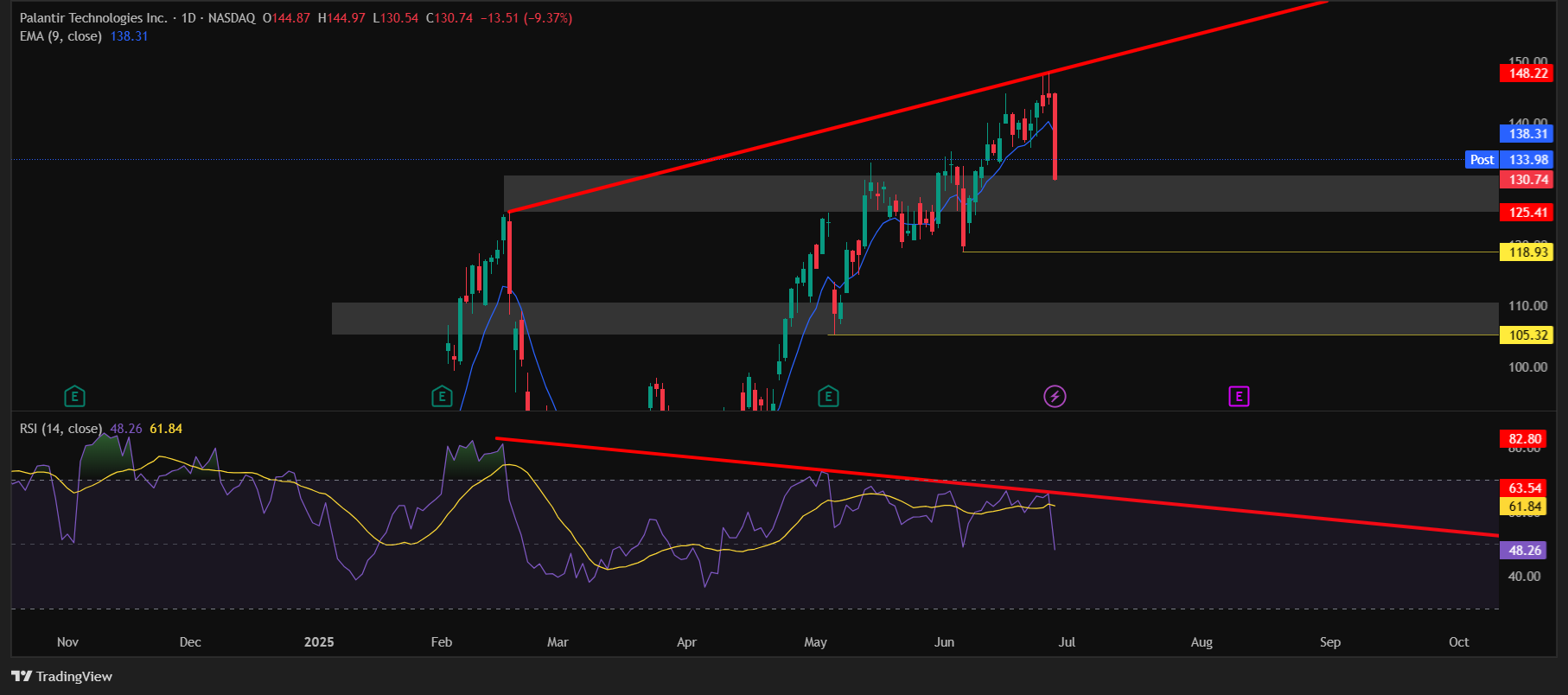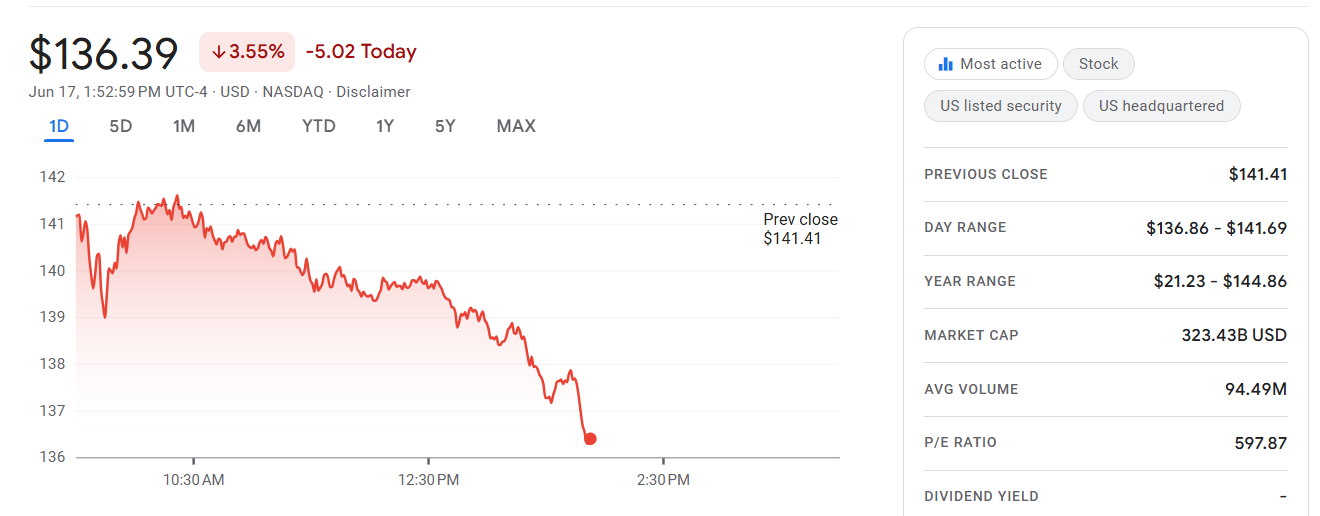Shares of Palantir Technologies Inc. (NYSE: PLTR) closed sharply lower on Friday, tumbling 9.37% to $130.74 as investors absorbed a wave of selling pressure. The market cap has plunged to $308,534,946,784 as selling pressure intensified.
The stock, which has rallied over 124% from its April swing low, has now pulled back nearly 12% from its all-time high of $148.22.

Why is Palantir going down?
Here are three key reasons driving this drop:
1. Unsustainable Valuations
Palantir is trading at a sky-high price-to-earnings (P/E) ratio of 570.94, based on trailing twelve-month earnings per share of $0.23. Such valuations are hard to justify even for a growth-oriented technology company, especially after an extended rally. Many investors see this P/E as unsustainable, raising concerns that Palantir could be priced far beyond its fundamentals.
2. Profit Booking After a Powerful Rally
The stock surged 124.16% from its April low of $66.12, reaching a record high of $148.22 earlier this month.

However, RSI had already been diverging since February, warning of a potential pullback.
Traders expecting a deeper correction were initially caught off guard as institutional players continued buying to absorb liquidity. Once broader market participants regained confidence and resumed buying, larger players offloaded their positions at higher prices to maximize liquidity, driving Friday’s sharp decline.
Technically, the stock has broken below its daily 9-day exponential moving average and is testing support in the $125–$130 range, with its weekly 9 EMA also nearby.
A short-term bounce could occur here, but the broader structure suggests a potential move toward the $105–$100 zone, which aligns with the monthly 9 EMA and a key psychological round number.
3. Risks Surrounding Department of Defense Contracts
Investors are also wary of risks tied to Palantir’s government business. The U.S. Department of Defense recently published its fiscal year 2026 budget request, which, after accounting for inflation, is slightly smaller than the previous cycle. Since Palantir depends on significant government and defense contracts, any perceived reduction in defense spending could negatively affect future revenue growth.
Also Read – 5 Reasons Circle (CRCL) Stock Is Crashing as It Touches the $200 Mark
Palantir Technologies Inc. (NYSE: PLTR) has delivered impressive gains for investors over the past year, surging 442.49% and climbing 71.57% year-to-date as of the latest close.
This article is for informational purposes only and should not be considered financial advice. Investing in stocks, cryptocurrencies, or other assets involves risks, including the potential loss of principal. Always conduct your own research or consult a qualified financial advisor before making investment decisions. The author and publisher are not responsible for any financial losses incurred from actions based on this article. While efforts have been made to ensure accuracy, economic data and market conditions can change rapidly. The author and publisher do not guarantee the completeness or accuracy of the information and are not liable for any errors or omissions. Always verify data with primary sources before making decisions.
Dawson Blake is a financial markets expert with over 10 years of experience, focusing mainly on stock market news and price movements. He aims to become a top-tier authority in curating stock news content that readers can trust as their go-to source for market information. Dawson enjoys breaking down market activity, company updates, and daily trends to help investors stay informed and make smarter financial decisions. His writing is simple, clear, and designed to make the stock market easy to follow for everyone.



